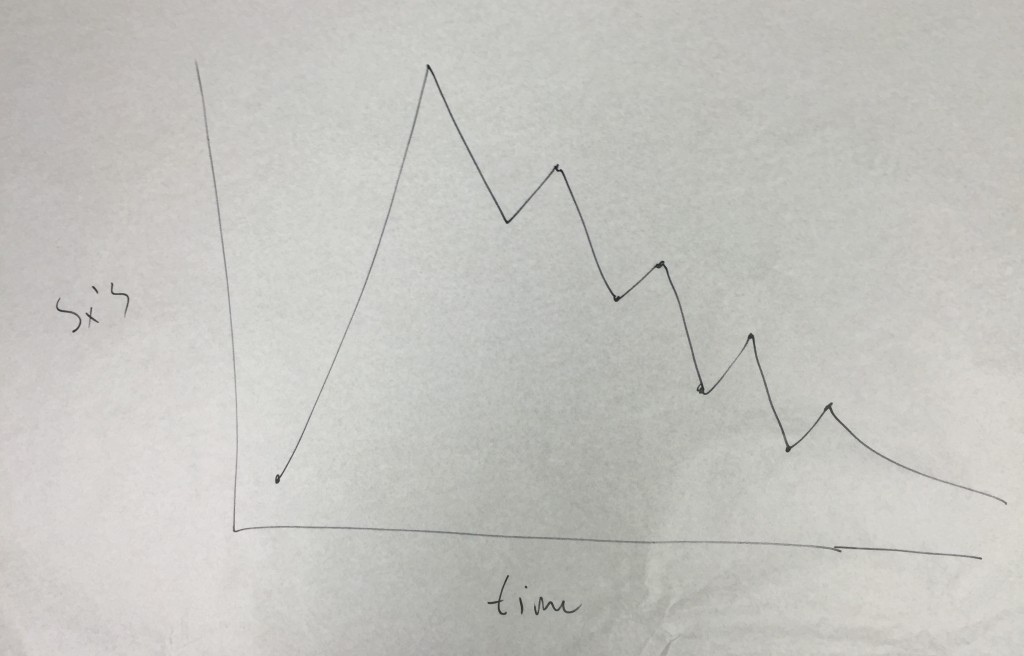” Did I screw it up, Doc?”. I hear these words often.
I understand.
Several months ago I had an injury and although I have been treating patients with similar injuries for years, I still worried. Every time I thought the problem was gone or I was getting better, there would be an increase in my symptoms – an apparent setback. And each time, I asked myself the same question as my patients often ask me – “Did I screw it up?”.
When we’re injured or recovering from surgery, we are understandably worried. Our health defines us. Without it, everything that means anything to us can be in jeopardy – our work, our social activities, our mental well-being. Not to mention that having a health problem can be simply miserable. Who want’s pain or limits on our activities? Heck, just having to go to the doctor is often an incredible hassle. No one wants to be sick or injured. So when we believe that we are finally recovering, any apparent setback can be very unsettling.
Unfortunately recovering from surgery or an injury isn’t a straight line from bad to good. Recovery is more like progress in the stock market – two steps forward, one step backwards and then forward again. These inflections in your symptoms are expected and are often a good thing, usually a sign of progress. See, you can’t improve without pushing your limits. However, each time you are challenged, you are likely to get an increase in symptoms. If you aren’t, your probably not progressing appropriately. And in Orthopaedics, if you’re not moving forward, you’re likely falling behind. That is, you’re likely getting stiffer, weaker and further away from being healed.
The path of healing, from beginning to end, typically follows a very predictable pattern. Initially there is an increase in symptoms, either from an injury or surgery. Fortunately with rest and time, your symptoms often improve some. Then you increase your activities further, perhaps start PT, go back to work, go shopping, stop using your sling or crutches, and your symptoms increase once again. You get used to this new level of activity and then your demands are further increased and, low and behold, some symptoms come back. This forward and backward pattern continues until you fully recovery. There will be expected setbacks. However, although there are bumps in the road, the overall trend in your symptoms should be down (see diagram). Just not straight down, as we would hope.
The “Up” and “Down” of healing
This may seem odd, but it is not unlike how we accomplish most other goals. Take for example how we learned math. Most of us initially struggled to simply add single digits. Once that became easy, our teacher then pushed us to add multiple digits. This was then followed by subtraction, multiplication, division and so on. Each time we mastered a skill, we were given a new more challenging one. At each stage, the new activity was likely once again difficult, frustrating and anxiety provoking – that is until we learned (accommodated to) the new lessons.
We heal like we learn. At each point, we accommodate to a new level of comfort and ability. We can choose to stay at this level or we can surpass it. But to progress, we need to push forward to a greater level of function… and when we do that, we will get increased symptoms, often including pain and concern. Although you can overdue it and you can jeopardize your outcome, if you are following your surgeon’s and therapist’s instructions, the more likely reason for your symptoms is that you are simply improving.
So not to worry, you probably didn’t screw it up. You’re just getting better :-).


What a great article. Something that put my mind at ease and gave me a better understanding of the real healing process.
Thanks Dr. Berg
Gail, Glad it helped. You’re on your way!